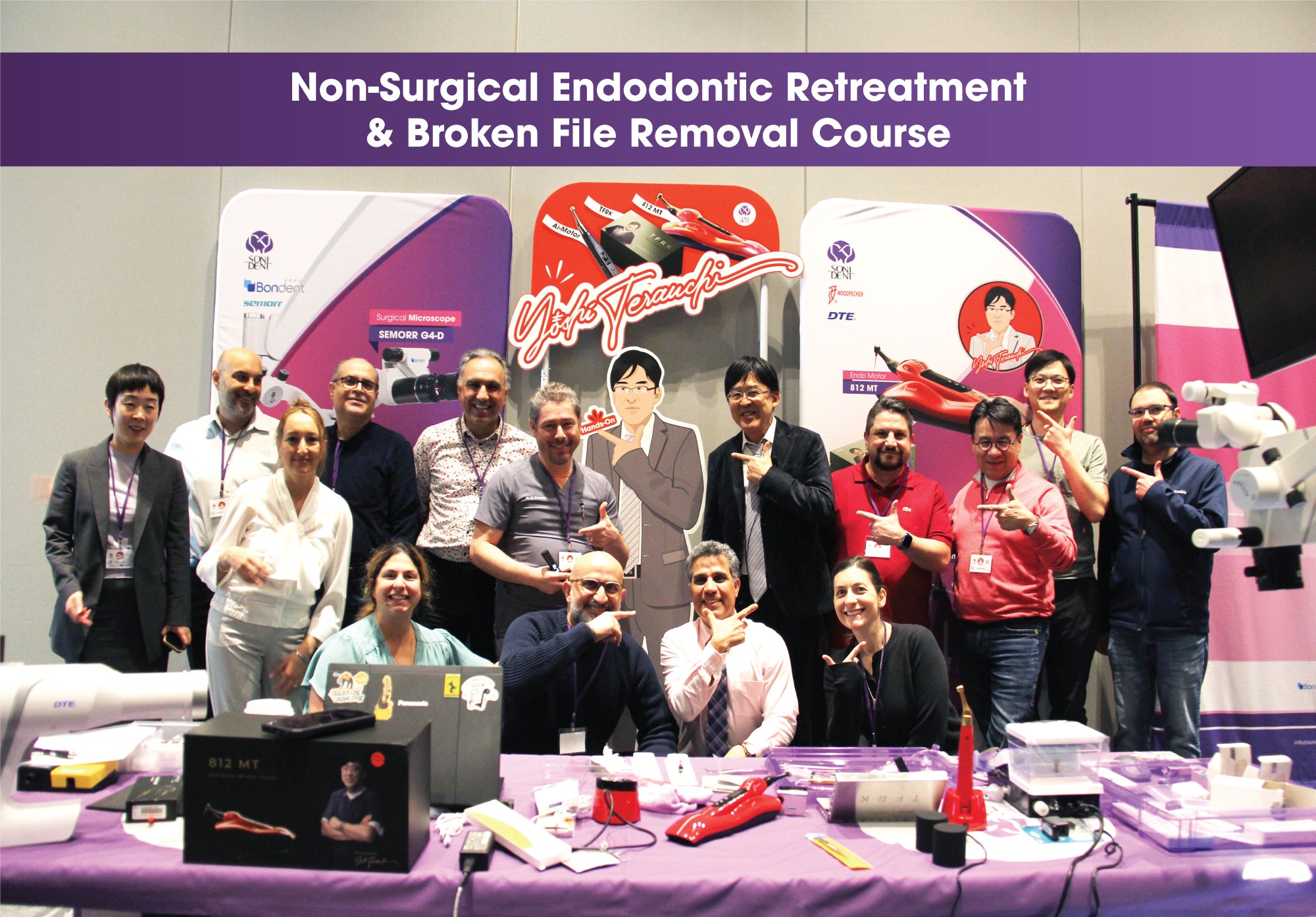
"Non-Surgical Endodontic Retreatment & Broken File Removal Course
We had the honour of having Dr.Terauchi leading our "Non-Surgical Endodontic Retreatment & Broken File Removal" Course!
Below you can read a summery of the topics that were discussed during the lecture & hands-on component of this course!
Enhancing Success in Root Canal Therapy: Understanding and Managing Treatment Failures
Root canal therapy, while often successful, can encounter challenges leading to treatment failures. The journey to healing isn't always straightforward, and in some cases, initial therapy may not result in the desired outcome. Even retreatment can falter if the underlying causes of failure aren't identified and addressed effectively. In a forthcoming lecture, we delve into the complexities of these scenarios, emphasizing the importance of accurate diagnosis, meticulous planning, and precise execution in achieving successful outcomes.
Accurate Diagnosis and Treatment Planning:
One of the pivotal aspects of root canal therapy lies in accurate diagnosis and treatment planning. Distinguishing between odontogenic and non-odontogenic pain is crucial, especially during retreatment. Understanding the nuances of diagnosis ensures appropriate interventions tailored to individual cases.
Causes of Non-healing Cases:
Identifying the whereabouts of bacteria causing apical periodontitis and recognizing typical sites for biofilm formation are vital for addressing non-healing cases. Failure to adequately disinfect the root canal system can perpetuate treatment failure, highlighting the importance of thorough cleaning, shaping, and irrigation.
Removal of Gutta-percha Root Filling Materials and Biofilms:
Retreatment often necessitates the removal of existing gutta-percha root fillings and biofilms. This step is imperative for accessing and disinfecting areas previously inaccessible to instrumentation and irrigation. Employing efficient techniques for gutta-percha removal ensures thorough canal debridement.
Management of Ledged Canals:
Preventing ledge formation and employing practical techniques to bypass ledges are essential for successful retreatment. Managing these mishaps effectively minimizes the risk of treatment failure and ensures optimal canal preparation.
Predictable and Minimally Invasive Instrument Retrieval:
Broken files within the canal pose significant challenges to treatment success. Employing predictable and minimally invasive techniques for their retrieval is paramount. Understanding key preparation and removal techniques enhances success rates while minimizing iatrogenic accidents.
MTA Obturation in Retreatment (Perforation Repair):
Comparing clinical properties and root canal preparation between gutta-percha and MTA sheds light on the advantages of the latter as a root filling material. Predictable techniques for MTA obturation play a pivotal role in achieving successful outcomes, particularly in cases requiring perforation repair.
Minimally Invasive and Predictable Broken File Removal:
The presence of broken files in the canal can compromise treatment outcomes. Employing a standardized protocol for instrument retrieval ensures predictability and minimizes iatrogenic risks. Understanding and implementing these protocols are essential for enhancing success rates in root canal therapy.
In conclusion, navigating the complexities of root canal therapy requires a comprehensive understanding of the factors contributing to treatment failures and the implementation of precise management strategies. Through accurate diagnosis, meticulous planning, and the adoption of standardized protocols, practitioners can enhance success rates and optimize patient outcomes in retreatment scenarios.
- Choosing a selection results in a full page refresh.
!
